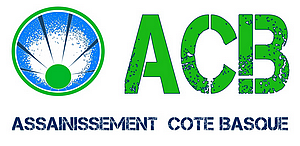Content

FASB defines impairment loss as the amount by which the carrying value exceeds an asset’s fair value. Gains are increases in the business’s wealth resulting from peripheral activities unrelated to its main operations. Recall that revenue is earnings a business How to Record the Disposal of Assets generates by selling products and/or services to customers in the course of normal business operations. That is, earnings result from the business doing what it was set up to do operationally, such as a dry cleaning business cleaning customers’ clothes.

Note that a single disposal record can include one or more assets for disposal. Suppose you are buying an asset through installments or loan payments and you make a deposit. If a fixed-asset account does not already exist, you need to create one. Then, post any payments to the account on the dates you made them.
Dispose Of Or Retire Fixed Assets
We will demonstrate the loss on the disposal of an asset in Good Deal’s next transaction. At the end of the 2nd year of the asset’s life, Butch’s piece of equipment was stolen. When a business loses possession of an asset, asset disposal occurs. Tom uses the straight-line method to record the asset’s depreciation. When the disposal proceeds are greater than the carrying value of the asset, there will be a disposal gain.
You can also distinguish assets by their physicality , convertibility and their business usage. If the company receives a $12,000 trade‐in allowance, a gain of $2,000 occurs.
Start the journal entry by crediting the asset for its current debit balance to zero it out. Then debit its accumulated depreciation credit balance set that account balance to zero as well. Debit Cash or the new asset if either is received in exchange for the one disposed of, if applicable. Finally, debit any loss or credit any gain that results from a difference between book value and asset received. If the entire cost of an asset has been depreciated before it is retired, however, there is no loss.
How To Record The Disposal Of Revalued Non
The term fixed, however, does not refer to the physicality of an asset. Some companies move fixed assets regularly for business purposes. Recording fixed-asset transactions helps create valuations and aids in financial reporting, which can be crucial to capital-intensive projects.
- You can also record new asset costs for trade-in transactions.
- Original Cost$10,000Salvage Value$500Depreciation$9,500 over useful life($500 written off upon disposal)In this example, an asset purchased for $10,000 has a salvage value of $500.
- Asset disposal requires that the asset be removed from the balance sheet.
- In accounting, software for internal use is treated differently from software purchased or developed to sell to others.
- This ranges from the disposal of fixed assets with zero net book value, at net book value as well as the journal entry for gain or loss on disposal.
- For non-monetary asset exchanges without commercial substance, the expectation is that the exchange will not materially alter future cash flows.
Different account information can also be used to comply with charitable deduction reporting requirements in some countries. There were no revenues, expenses, or gains, but there was a loss of $180 on the sale of equipment.
Entry 3
Let’s consider the following example to analyze the different situations that require an asset disposal. Tim worked as a tax professional for BKD, LLP before returning to school and receiving his Ph.D. from Penn State. He then taught tax and accounting to undergraduate and graduate students as an assistant professor at both the University of Nebraska-Omaha and Mississippi State University. Tim is a Certified QuickBooks Time Pro, QuickBooks ProAdvisor for both the Online and Desktop products, as well as a CPA with 25 years of experience. He most recently spent two years as the accountant at a commercial roofing company utilizing QuickBooks Desktop to compile financials, job cost, and run payroll.
Use data selections to indicate the assets that you want to dispose of. Harold Averkamp has worked as a university accounting instructor, accountant, and consultant for more than 25 years. He is the sole author of all the materials on AccountingCoach.com. Combining the amounts so far, we see that the net amount of cash from operating activities is a negative $50. In other words, rather than providing cash, the operating activities used a net $50 of cash. The increase in the Supplies account is assumed to have had a negative effect of $150 on the company’s cash.
Depreciation And Disposal Of Fixed Assets
Choose a method or click the Disposal Wizard button to be guided through the disposal data entry. The following steps are to be followed in order to take the correct amount of depreciation prior to running Single Asset Disposal or Mass Disposals . Use Data Selections to indicate what accounts you want to affect by the disposal. Company and item number are mandatory data sequence items for the mass disposal procedure.
For example, the machinery and equipment you use for the manufacturing of your products can serve you for several years. An asset must be removed from the books due to unforeseen circumstances (e.g., theft). Eric Gerard Ruiz is an accounting and bookkeeping expert for Fit Small Business. He completed a Bachelor of Science degree in Accountancy at Silliman University in Dumaguete City, Philippines. Before joining FSB, Eric has worked as a freelance content writer with various digital marketing agencies in Australia, the United States, and the Philippines. Eric is a staff writer at Fit Small Business focusing on accounting content.

An asset is any resource that you own or manage with the expectation that it will yield continuing benefits or cash flows. An asset is also a resource the value of which you can dependably measure.
The Fixed
This means that cash proceeds from the disposal equal the net book value of the machinery. Fixed assets or plant assets or commonly called PPE are used in the course of business operation in order to generate an inflow of economic benefit to the company.

Below are the most frequently asked questions concerning fixed asset accounting, as well as the concise, clear answers you’re seeking. When an organization anticipates that it can sell an asset or that an asset will otherwise provide value at disposal, that amount represents the salvage value. You deduct the salvage value from the initial cost to determine the amount that will be depreciated through the service life of the asset. This method accounts for the expense of a longer-lived asset that quickly loses its value or becomes obsolete. Examples of assets that should use the double declining methods are computer equipment, expensive cell phones and other technology that has more value at the beginning of its life than at the end.
Accounts To Adjust In A Disposal Journal Entry
Update the Accumulated Depreciation account up to the date of disposal by recording a partial year depreciation expense. Debit Depreciation expense and credit Accumulated Depreciation for the partial-year depreciation. EXECUTIVE SUMMARY TO ESTABLISH A SINGLE MODEL BUSINESSES CAN follow, FASB issued Statement no. 144, Accounting for the Impairment or Disposal https://www.bookstime.com/ of Long-Lived Assets. FASB intends it to resolve implementation issues that arose from its predecessor, Statement no. 121, Accounting for the Impairment of Long-Lived Assets and for Long-Lived Assets to Be Disposed Of. IMPAIRMENT EXISTS WHEN THE CARRYING AMOUNT of a long-lived asset or asset group exceeds its fair value and is nonrecoverable.
Therefore, if you sold the combo card for, say, $700,000, your basis would be the $500,000 you paid for the Joe Jackson, and your reported gain would be $200,000. Types of assets, such as inventory, vehicles, and equipment, that help them bring in revenue and add value to the business.
4 1 Required Setup For Computing Depreciation
For example, a manufacturing company purchases a machine on Dec. 1, 2019 for $56,000. The company expects that machine to be useful for three years. Value estimates may not be consistent, and they can and should be adjusted throughout the life of an asset.
Financial Accounting
If the disposal group is a component of an entity, as in the earlier ABC example, the component’s operations results (a $400,000 loss) are included in discontinued operations for year 1. The $220,000 loss on the disposal group is part of discontinued operations in year 1.
Jerry estimates that he’ll be able to sell it for $200 at the end of its useful life. Jerry owns a piece of equipment that he acquired for $20,000. In this case, we have to close out the Machinery and Accumulated Depreciation – Machinery accounts.
In this case, it might be better to revalue the Fixed Assets to show their new market values at the end of the period. The truck’s book value is $7,000, but nothing is received for it if it is discarded. The company breaks even on the disposal of a fixed asset if the cash or trade-in allowance received is equal to the book value.

